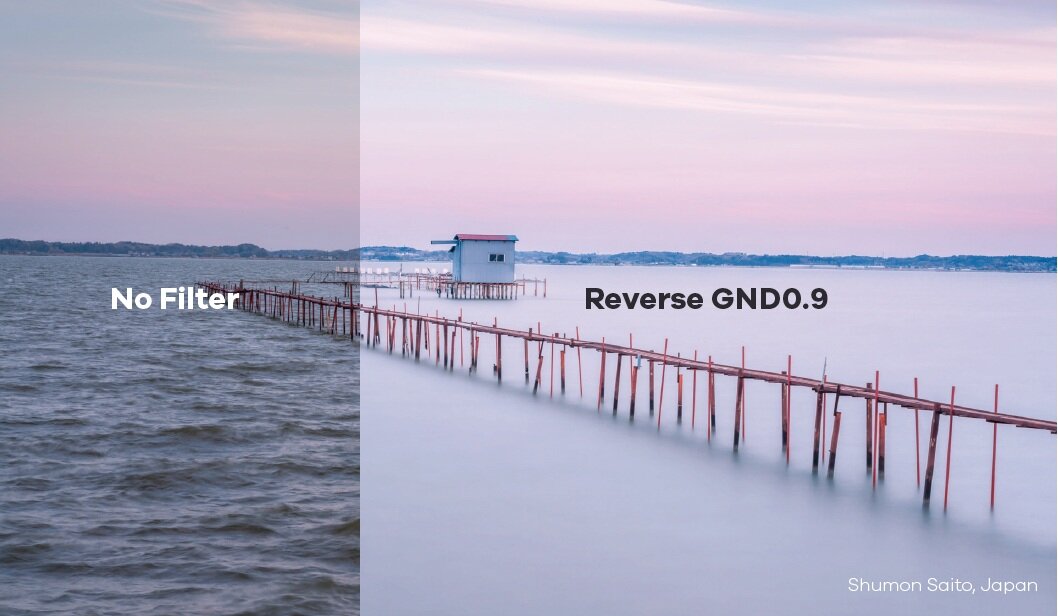Haida Red-Diamond Filters
The Use of Neutral Density Filters (ND)
Neutral Density Filters create a darkening of the entire image, allowing you to photograph with a wider aperture or slower shutter speed than normally required. By slowing your shutter speed or increasing your aperture, you are able to control depth of field and convey movement more easily.
Haida Red-Diamond Filters. This neutral density filter is 2mm thick and features light reduction in exposure across the entire image. Made of optical glass, the filter is designed to provide a neutral performance that leaves no colour cast and preserves image sharpness. Multi-coating on double sides helps reducing ghosting and reflections - making the surface resistant to scratches and repels water and is easier to clean when using the filter in inclement conditions.






The Use of Graduated Neutral Density Filters (GND)
Graduated Neutral Density Filters help to darken specific areas of an image, such as bright skies, while allowing for a normal, unaffected exposure in the other regions of the image. By using a Graduated Neutral Density Filter during the exposure, you capture a perfectly balanced exposure straight out-of-camera, without the complication of image-stacking in camera or in post processing.
The NanoPro multi-coating filter is made of optical glass and features a 2mm thickness compatible with a wide range of holders - resulting in minimised reflections and increased resistance to scratches. Both sides of the filter are treated with several layers of coating, resulting in minimised reflections and increased resistance to scratches.
Soft Transition (S-GND). A Graduated Neutral Density Filter with a soft-edged line of transition is particularly useful for images that do not have a strongly defined transition between the background and foreground. Soft transitions feature a soft edge in its centre, slowly fading from completely clear to partially darkened as we move towards the top. This allows the filter to keep bright skies under control without creating a line in the image. are suitable for use with wide-angle / super wide-angle lenses.
Medium Transition (M-GND). The Medium Graduated Neutral Density Filter is designed to reduce light in the sky which allows for a brighter foreground, giving your images a perfectly balanced result straight out of camera. A neutral density filter with a medium edged line is perfect compromise of Soft and Hard Graduated filter and is suitable for use in a medium / short telephoto lens.
Hard Transition (H-GND). Helps to balance exposure when working in high-contrast situations and features a hard edge in its centre that starkly divides the clear section and the darkened section, making this filter ideal for photos with a sharp horizon such as seascapes and elevated urban landscapes and is well-suited for photographing scenes with an even, distinct horizon line, as well as when working with long or telephoto lenses.
Reverse Transition (R-GND). Dedicated to photographing sunrises and sunsets. By reversing this direction of the graduated ND, you are able to more accurately control bright horizon lines while retaining exposure in the foreground and sky - the sky is not “top-heavy”.
Horizon GND . It can be applied to darken the sky, specifically along the horizon during a sunrise or sunset, while allowing for a normal, unaffected exposure in the other regions of the image. This filter achieves its effect with a 1.2 band of density across its centre region that provides up to a 4-stop reduction in light from entering a lens.

